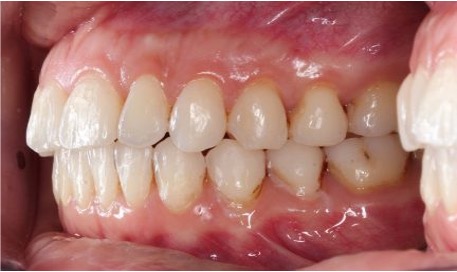Discover the power of an Invisalign smile
Invisalign’s popularity is most likely down to the treatment’s discretion and convenience. Being able to remove the trays before eating, drinking and playing sport eradicates the complications having a brace used to involve, but what about results? Are Invisalign clear aligners as effective as traditional braces?
The simple answer is yes for the majority of patients, bearing in mind a few considerations. Because Invisalign trays are removable, the effectiveness of the treatment relies on the patient being disciplined. The clear aligners are designed to be in the mouth for 20-22 hours a day.
Invisalign can even address every type of bite issue – cross, open, under and over bites – but for the most serious cases surgery may also be required. Ask Dr A Bechar at your consultation.
Crowding Teeth are overlapping
A crowded smile is one where the teeth don’t have enough room to align properly, and are forced into too tight a space, resulting in overlapping teeth and enclosed areas of gum that are hard to keep clean. Invisalign clear aligners apply pressure to the teeth and jaws, moving everything into alignment for an even smile.
Deep bite / Overbite Upper teeth project over the lower teeth
When the upper teeth project over the lower teeth, this is called an overbite, more exaggerated cases of which are called a deep bite. Invisalign trays apply pressure to the teeth and jaws, shifting them into their correct position over time. The most extreme cases of an overbite may require surgery.
Open bite Upper and lower teeth don’t fully meet
When the upper and lower rows of teeth don’t meet when the jaws are fully closed, this is called an open bite. The rear teeth might connect properly, but the teeth at the front of the mouth don’t. Invisalign braces can treat an open bite, but the most extreme cases may require surgery.
















